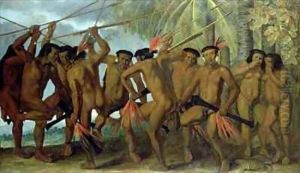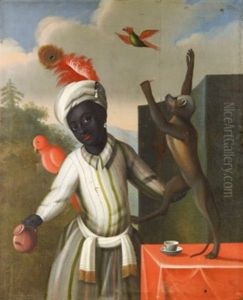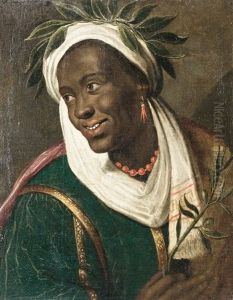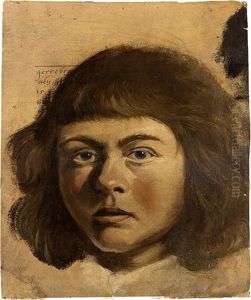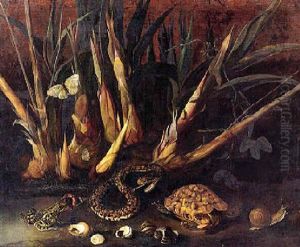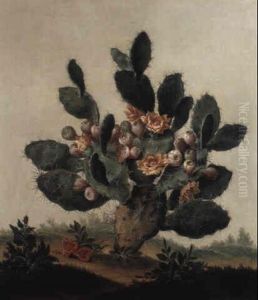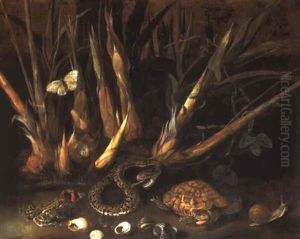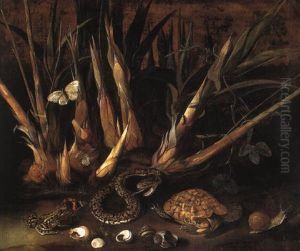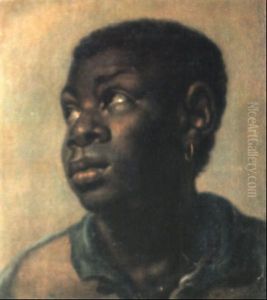Albert van der Eeckhout Paintings
Albert van der Eeckhout was a Dutch Golden Age painter, born in Groningen, the Netherlands, around 1610. He is best known for his works depicting Brazilian natives and landscapes, which he created during his time in Brazil as part of Dutch expeditions. His work is significant for its ethnographic and naturalistic portrayal of the indigenous people and the Brazilian environment during the 17th century.
Van der Eeckhout was a student of the well-known Dutch painter Rembrandt van Rijn. Under Rembrandt's tutelage, he developed a strong command of chiaroscuro and a keen eye for detail, both of which would become hallmarks of his later works. His style was deeply influenced by his master, but he also developed his own distinctive approach, especially evident in his Brazilian pieces.
In 1637, Van der Eeckhout traveled to Brazil as part of the Dutch West India Company's efforts to establish and maintain their colony in the northeast region of the country, known as Dutch Brazil. He was there during the governance of Count Johan Maurits van Nassau-Siegen, who was a great patron of the arts and sciences. During this period, Van der Eeckhout produced a series of paintings and drawings that depicted the local population, flora, and fauna. These works were among the earliest European artistic representations of the New World and were invaluable to scholars for their ethnographic significance.
Van der Eeckhout's Brazilian period was relatively brief, as he returned to the Netherlands in the early 1640s. Despite the short duration of his stay, the impact of Brazilian culture and landscapes on his art was profound and lasting. Upon his return to Europe, he continued to paint, creating works that often reflected his experiences in Brazil, as well as religious and historical subjects.
Albert van der Eeckhout died in Amsterdam in 1666. While not as widely known as some of his contemporaries, his contributions to Dutch art and ethnography are recognized by historians and collectors. His works are held in various museums and collections around the world, offering a unique window into the Dutch colonial perspective of the 17th-century Americas.
